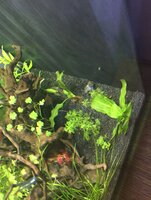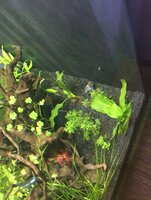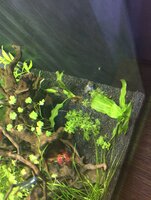dan4x4
Member
- Joined
- 11 Nov 2013
- Messages
- 433
Good evening, I have a bubble of fungus growing on the barclaya longifolia bulb i dropped into the tank last week. Do I need to be concerned about this?
Its the same sort of fungus I had on the wood when the aquarium was 1st set up many months ago.
The build has been lying there, thought it wasn't going to germinate, however it has 1 root coming out of the side, which has not hit the substrate yet.
I cannot see any leaves coming out of the bulb as yet.
Its the same sort of fungus I had on the wood when the aquarium was 1st set up many months ago.
The build has been lying there, thought it wasn't going to germinate, however it has 1 root coming out of the side, which has not hit the substrate yet.
I cannot see any leaves coming out of the bulb as yet.



![URL]](/forum/proxy.php?image=http%3A%2F%2F%5BURL%3Dhttp%3A%2F%2Fs1253.photobucket.com%2Fuser%2Fdan300r%2Fmedia%2FMobile%2520Uploads%2FIMG_2535.jpg.html%5D%5BATTACH%3Dfull%5D99455%5B%2FATTACH%5D%5B%2FURL%5D&hash=fd27c34675778eaf470eb9e93352a442)



